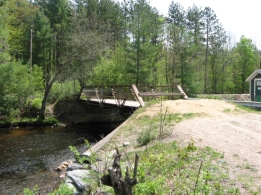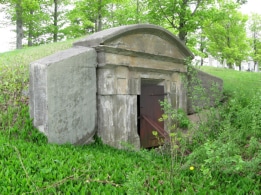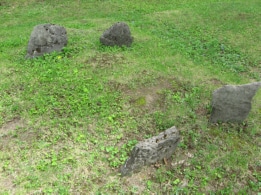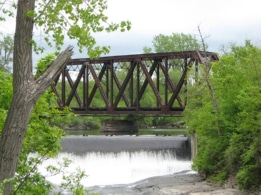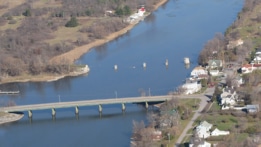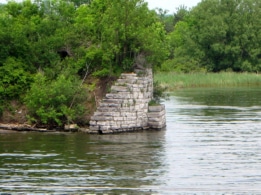
Taken on 05/14/08
Looking straight onto the bridge.
You can still walk over the bridge, at your own
peril...



From
Dawn in Atlanta Ga: "I grew up
on Donnattburg road from age 8-18. Memories flooded me when I saw your pic of
the bridge. It used to be functional when I lived on the road there.. in fact
that whole road was a dirt road for years.. then they paved it to the bridge.
When I went to college in 83..they closed the bridge and the pass to Austin
Road... eliminated a great short cut!
I used to sit on that bridge and read and throw rocks into the river."

On 1/24/12
Kathy Baxter writes "Good thoughts of walking on that bridge - As a young girl
many years ago we would go to the Independence River after haying on our farm in
Glenfield. Dad would take us and all our friends on the back of the truck to
swim. What a wonderful time we all had. I took our kids there also. Now there is
a new lovely house there at the old swimming hole."

On 4/8/21 Rob writes " I remember this bridge!! I remember my babysitters farm just up the road and i stayed a couple months there one summer, god i couldn't have been more than 9 or 10 years old. We would walk down to this bridge and swim in the creek there and there was always crayfish to find. What a great picture and flashback!"



